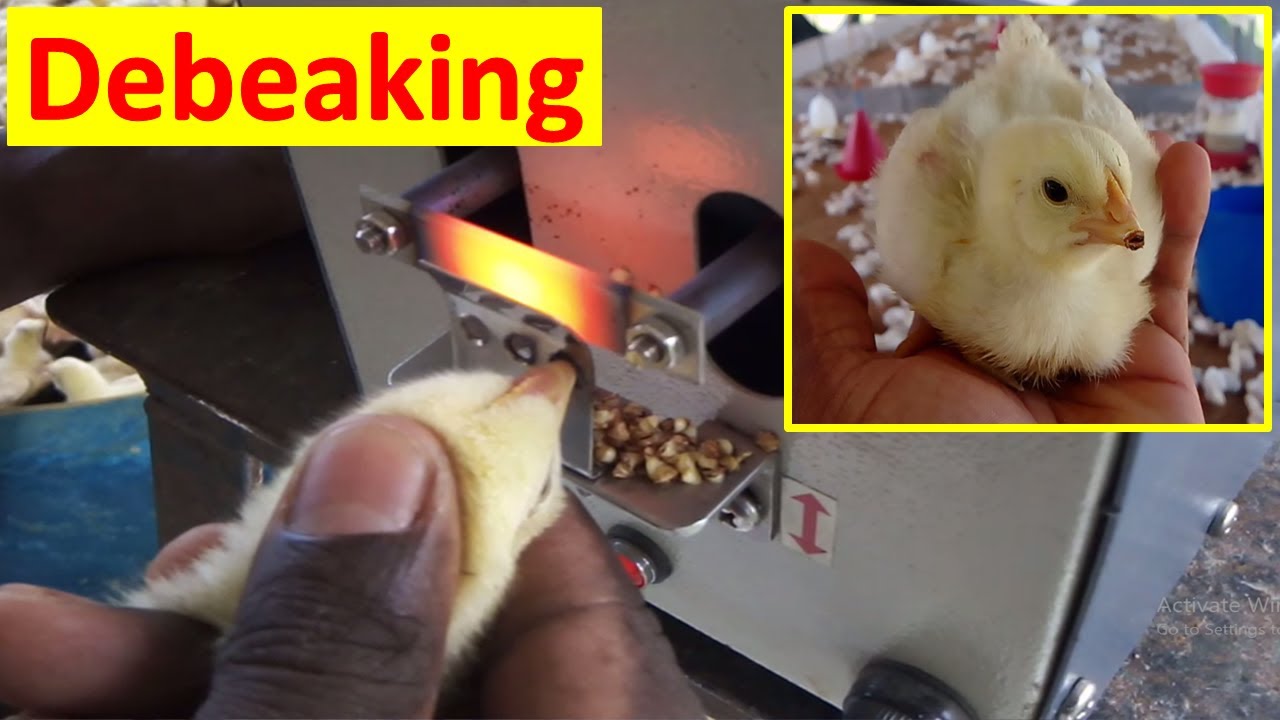Beak-trimming (Debeaking) Practices & Welfare Issues in Commercial Layers
Beak-trimming is also popularly known as debeaking. It is undertaken usually after 6 weeks of age and most often in the grower house. It can be done in the brooder house also at early age. Beak trimming is the removal of approximately one-quarter to one-third of the upper beak, or both upper and lower beak of a bird (Gentle et al., 1995). For the majority of birds, it involves the partial removal of the upper and lower beak using an electrically heated blade. More recently, scientists have used the term ‘partial amputation’ instead of beaktrimming, although the beak does re-grow and receptors are functional in the regenerated beak tissue (Glatz et al., 1998)
How the Beak-Trimming Practice Developed?
Increase in cost of land and wages of labour has made deep litter system costly. Therefore, alternate systems in which birds are totally restricted to meshwork compartments (cages) were introduced in the early 1920s. Due to less space and crowding, poultry birds got fewer options for natural behaviours like scratching, dust bathing and started pecking each other leading to feather pecking and cannibalism (Box 11.1). To prevent this, beak trimming or beak mutilation practice was developed by farmers in the following forms during 1920s to 1940s: Trimming / Paring of the tip of the upper beak Upper beak burning and cauterising with: o Heated knife o Gas torch o Soldering iron A heated knife attachment with frame was developed and named it as ‘debeaker’ by Lyon Electric Company in 1942 and registered in 1943 (Davis, 2008).
WHY BEAK-TRIMMING?
Farmers usually perform beak-trimming due to following economic and behavioural reasons: Beak trimming is performed early in the life of commercial hens to decrease injuries caused by the behavioural bad habits (vices) like: a) Pecking and eating one’s own species (cannibalism) b) Bossing over others (bullying) c) Feather and vent pecking. To avoid feed wastage: a) Quantitative: Birds have a natural tendency to scratch the feed and search for grains especially when feed is in the mash form. In this process, there will be spillage of feed from the feeders. b) Qualitative: Grower ration comes as mash (powder form). Birds do establish a peck order within the enclosure. The stronger birds eat feed first and preferentially pick and eat the grains (also a natural instinct) if beaks are not trimmed. It is well known that the grains are energy-rich and poor in all other nutrients. Hence, the stronger birds become weaker. When the weaker birds reach the feeders after the stronger ones have left, they will be left with only powdery feed which they cannot eat because of sharp beaks. Therefore, they also suffer nutrient deficiency and become weaker. Consequently, the entire flock shows a poor feed conversion ratio and farmer will be at loss. If the beaks are trimmed, the birds cannot search for grains. Instead, they have to scoop the feed and eat thereby making available all components of the feed to all the birds ensuring uniform growth, production and reproduction. To avoid egg-eating vice. It reduces aggressive interaction among birds and trimmed laying birds are less fearful than untrimmed ones, both in multi-bird cages and in floor pens.
When Beak-trimming is Performed?
The common ages for birds to be beak-trimmed are: Day-old (very common) 5–10 days old (precision or block beak-trimming) 4–6 weeks 10–12 weeks (re-trimmed) Many hatcheries are reluctant to carry out beak-trimming prior to delivery of chicks. Already baby chicks are exposed to pain and stress during sexing of day old chicks, vaccination, and transportation. Therefore beak-trimming adds further pain and stress to the chicks. However, day-old trimming results in fewer birds needing to be re- trimmed and also it can avoid bird handling stress at important growing stages of life (Andrade and Carson, 1975). For birds 10 to 12 weeks of age, beaks should be trimmed 6 to 7 mm beyond the nostril with 2 seconds of cauterization.
METHODS OF BEAK-TRIMMING
Beak – trimming is one of the most common methods used in layers and turkey birds to control peck injuries.
Poultry birds that are normally beak-trimmed are: Laying hens Turkeys Broiler breeders ( as they are kept for a long time) Quails Ducks Broilers meant for meat are not normally beak-trimmed as they are marketed by 5-6 weeks before injurious pecking starts.
Beak-trimming Methods
Different methods of beak trimming are broadly classified under four categories:
*Heat blade method
*Cold method (scissors or secateurs)
*Electrical (Bio-beaker)
*Infrared
Salient points under these methods are given below very briefly for your understanding.
Heat Blade Methods Consists of a hot plate / soldering iron (heated with gas / electricity) and cutting bar operated using a foot lever. Size is small and it’s very easy to handle or transport. Beak is cut and cauterized simultaneously in these methods.
Cold Methods In cold method, the beak is cut with clippers / scissors/ secateurs without cauterizing. Later cauterization is done with hot plate/iron touch.
Electrical Method (Bio-beaker) The Bio-beaker, which uses an electric current to burn a small hole in the upper beak and is the preferred method for trimming the beaks of turkeys.
Infrared Method
The infrared method directs a strong source of heat into the inner tissue of the beak and after a few weeks, the tip of the upper and lower beak dies and drops off making the beak shorter with blunt tips. The electrical and infrared methods are relatively welfare friendly compared to hot and cold blade methods as the former methods involve only the removal of beak tip only without an open wound. Other methods like lasers, freeze drying and chemicals have been tried, but are not popular. As per the Farm Animal Welfare Council – UK, cold cutting was the most accurate method in turkeys , but substantial re-growth of the beak occurred; although the Bio-beaker limited beak re-growth, it was less accurate. It was considered that the hot cut was the most distressing procedure.




